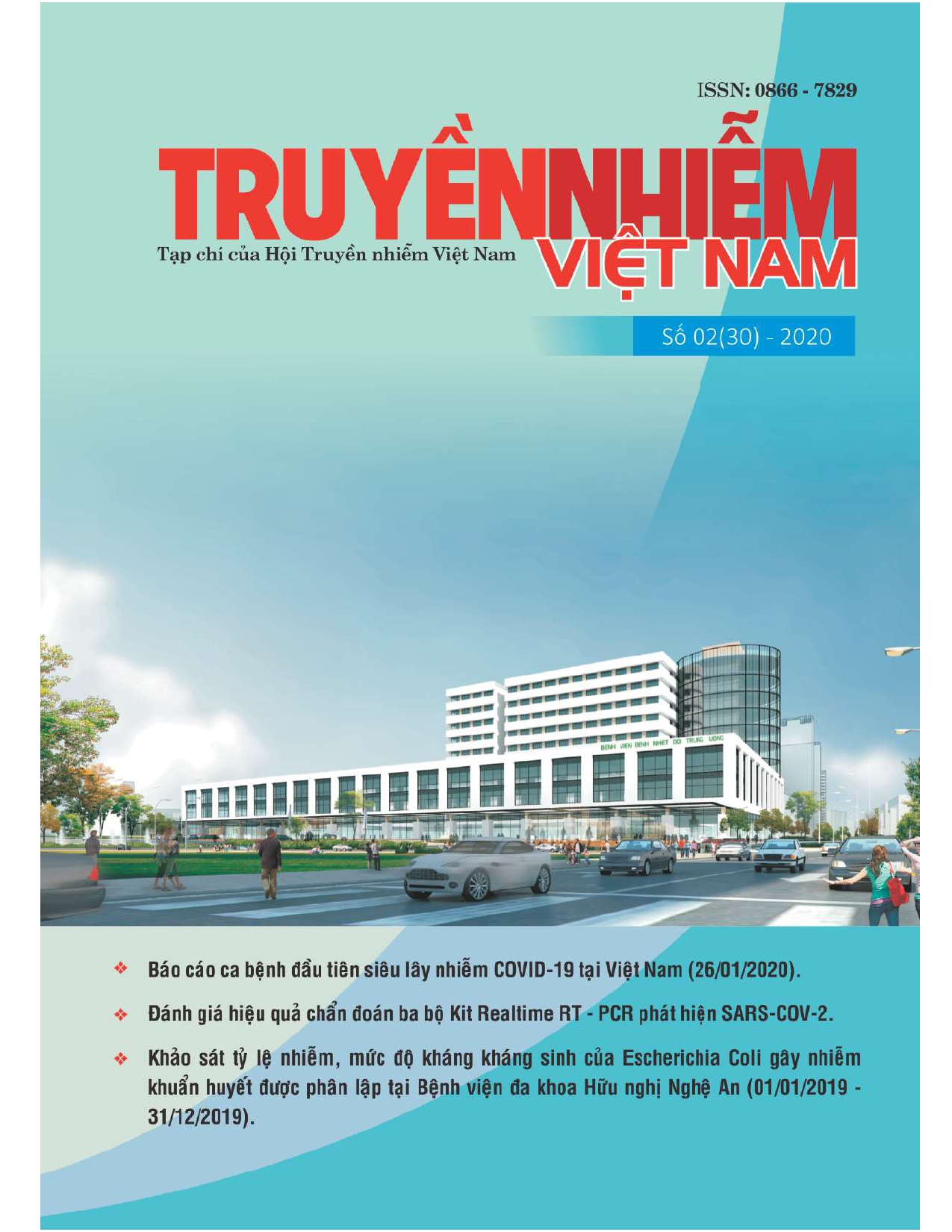PREDICTIVE AND PROGNOSTIC FACTORS BASED ON BIOMARKERS IN DENGUE HEMORRHAGIC FEVER PATIENT
Main Article Content
Abstract
Purpose: To study the predictive markers of Dengue hemorrhagic fever progressing.
Methods: A multicenter cross - sectional study, consisting of 200 DHF patients ≥ 18 years of age and during the epidemic in 2017. Hematological, biochemical, coagulation and interlekin.
Results: Univariate analysis showed that the prognostic parameters in the first 3 days of fever included hematocrit > 40%, platelets < 100,000/mm3, APTT > 40s and APTTr > 1,2. From days 4 to 6 of the fever were hematocrit > 40%, platelets ≤ 50,000/mm3, PTs and APTT (s) rose above the threshold, albumin < 35g/L; AST/ALT > 400U/L, total bilirubin > 17µmol/L; creatinine > 120µmol/L. The multivariate analysis results showed that the markers had prognostic value for severe dengue disease, in the first 3 days were platelets <100 x 103/mm3 (OR = 4.69; 95% CI 1.93 - 11.39), APTT > 40s (OR = 11.39; 95% CI 5.14 - 25.22), APTTr > 1.2s (OR = 4.1; 95% CI 1.35 - 12.45). From 4 - 6 days, albumin < 35 g/l (OR = 27.4; 95% CI 8.3 - 89.8), total bilirubin > 17µmol/L (OR = 36.04; 95% CI 2, 7 - 480,9). The indicators of interleukin (IL6, IL10, TFNa) have no predictive and prognostic values in clinical practice. Conclusions: In managing dengue patients, in addition to classifying DHF in three clinical forms, need to be used biomarkers to predict the risk of developing severe dengue disease.
Article Details
Keywords
Biomarker, severe dengue, prognosis dengue


